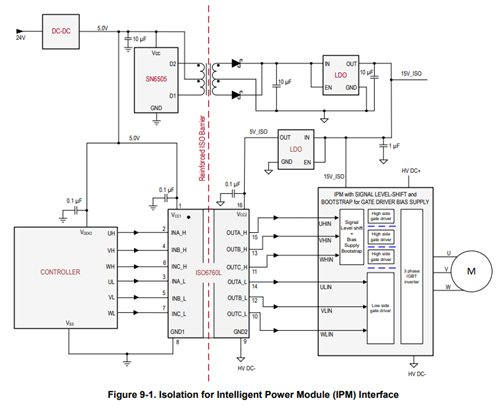Hi team,
I can't understand this. Why interlock can support opposite polarity? I thought interlock is to prevent two adjacent channels from having output at the same time.

Thanks
BRS
Kian
This thread has been locked.
If you have a related question, please click the "Ask a related question" button in the top right corner. The newly created question will be automatically linked to this question.
Hello Kian,
Thank you for your question. The interlock function is to prevent both the high and low channels of a specific motor channel from going high at the same time. For example, if you refer to the image below, if for some reason both INA_H and INA_L go high, the ISO6760L will recognize the failure, lock out, and force both OUTA channels low. This is true for all of the three interlock pairs, which are also referred to as adjacent channel pairs (INA_H/INA_L, INB_H/INB_L, and INC_H/INC_L).
When the datasheet says interlock can support opposite polarity it is referring to one of the accepted configurations, where one of the adjacent channels is high and the other is low. So for example if INA_H is high and INA_L is low, the two channels can be thought to have opposite polarities.

Regards,
Darrah